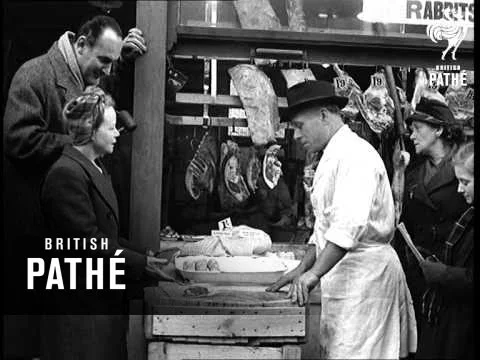.
Evacuation of children during the war | I Was There | WW2 > .
Protecting the Innocent - Kindertransport, Kids' Evacuations - Homefront - WW2 > .
I Was There - BBC >> . Protecting the Innocent - Kindertransport, Kids' Evacuations - Homefront - WW2 > .
? Pied Piper, Britain WW2 ?
Evacuations of civilians in Britain during World War II - Wikipedia .
The evacuation of civilians in Britain during the Second World War was designed to protect civilians in Britain, particularly children, from the risks associated with aerial bombing of cities by moving them to areas thought to be less at risk. Operation Pied Piper, which began on 1 September 1939, officially relocated more than 3.5 million people. Further waves of official evacuation and re-evacuation occurred on the south and east coasts in June 1940, when a seaborne invasion was expected, and from affected cities after the Blitz began in September 1940. There were also official evacuations from the UK to other parts of the British Empire, and many non-official evacuations within and from the UK. Other mass movements of civilians included British citizens arriving from the Channel Islands, and displaced people arriving from continental Europe.
Government functions were also evacuated. Under "Plan Yellow", some 23,000 civil servants and their paperwork were dispatched to available hotels in the better coastal resorts and spa towns. Other hotels were requisitioned and emptied for a possible last-ditch "Black Move" should London be destroyed or threatened by invasion. Under this plan, the nucleus of government would relocate to the West Midlands—the War Cabinet and ministers would move to Hindlip Hall, Bevere House and Malvern College near Worcester and Parliament to Stratford-upon-Avon. Winston Churchill was to relocate to Spetchley Park whilst King George VI and other members of the royal family would take up residence at Madresfield Court near Malvern.
Some strained areas took the children into local schools by adopting the WW1 expedient of double shift education—taking twice as long but also doubling the number taught. The movement of teachers also meant that almost a million children staying home had no source of education.
......
The Government Evacuation Scheme was developed during summer 1938 by the Anderson Committee and implemented by the Ministry of Health. The country was divided into zones, classified as either "evacuation", "neutral", or "reception", with priority evacuees being moved from the major urban centres and billeted on the available private housing in more rural areas. Each zone covered roughly a third of the population, although several urban areas later bombed had not been classified for evacuation. In early 1939, the reception areas compiled lists of available housing. Space for a couple of thousand people was found, and the government also constructed camps which provided a few thousand additional spaces.
In summer 1939, the government began to publicise its plan through the local authorities. They had overestimated demand: only half of all school-aged children were moved from the urban areas instead of the expected 80%. There was enormous regional variation: as few as 15% of the children were evacuated from some urban areas, while over 60% of children were evacuated in Manchester and Belfast and Liverpool. The refusal of the central government to spend large sums on preparation also reduced the effectiveness of the plan. In the event over 1,474,000 people were evacuated.
Government functions were also evacuated. Under "Plan Yellow", some 23,000 civil servants and their paperwork were dispatched to available hotels in the better coastal resorts and spa towns. Other hotels were requisitioned and emptied for a possible last-ditch "Black Move" should London be destroyed or threatened by invasion. Under this plan, the nucleus of government would relocate to the West Midlands—the War Cabinet and ministers would move to Hindlip Hall, Bevere House and Malvern College near Worcester and Parliament to Stratford-upon-Avon. Winston Churchill was to relocate to Spetchley Park whilst King George VI and other members of the royal family would take up residence at Madresfield Court near Malvern.
Some strained areas took the children into local schools by adopting the WW1 expedient of double shift education—taking twice as long but also doubling the number taught. The movement of teachers also meant that almost a million children staying home had no source of education.
......
The Government Evacuation Scheme was developed during summer 1938 by the Anderson Committee and implemented by the Ministry of Health. The country was divided into zones, classified as either "evacuation", "neutral", or "reception", with priority evacuees being moved from the major urban centres and billeted on the available private housing in more rural areas. Each zone covered roughly a third of the population, although several urban areas later bombed had not been classified for evacuation. In early 1939, the reception areas compiled lists of available housing. Space for a couple of thousand people was found, and the government also constructed camps which provided a few thousand additional spaces.
In summer 1939, the government began to publicise its plan through the local authorities. They had overestimated demand: only half of all school-aged children were moved from the urban areas instead of the expected 80%. There was enormous regional variation: as few as 15% of the children were evacuated from some urban areas, while over 60% of children were evacuated in Manchester and Belfast and Liverpool. The refusal of the central government to spend large sums on preparation also reduced the effectiveness of the plan. In the event over 1,474,000 people were evacuated.



